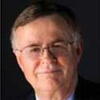
Wilde and Messina describe the driving forces that propel organizations forward.
By Ronald Wilde, ICMA-CM, and Phillip Messina
Although one of the most powerful forces on earth, influence often works in subtle ways. Much like the ripples created by tossing a rock into a still pool, influence invigorates an organization. The right kind can be felt by everyone and move entities forward. The same can be said for the way the wrong kind can lead them awry. The following is an example of how influence works, in both ways.
With a population of nearly two million, Vienna, Austria, in the early 1900s was one of the most dynamic cities on earth. The city was the major cultural, economic, and political center of central Europe. Yet it was a cauldron of conflicting social forces. With one of the most diverse populations of its time, it was a kaleidoscope of ethnic groups.
As part of the declining Austro-Hungarian Empire, Vienna shared in the difficulties of governing the 12 ethnic groups in the empire. The ancient monarchy was losing its grip as the feudal system was finally coming to an end. Liberal political ideologies were developing and fostering revolutions against the more traditional, conservative systems that favored the status quo and protected the wealthy classes.
The diversity of Vienna provided a fertile home to a dazzling array of artists, thinkers, and future leaders, including Sigmund Freud, composer Gustav Mahler, philosopher Ludwig Wittgenstein, Communist leader Leon Trotsky, painter Gustav Klimt, and composer Arnold Schoenberg.
However, without mature institutions to ensure tolerance for divergent cultures, political factions began to arise. These factions were known for their virulent rhetoric, anti-Semitism, and an inability to forge compromises with opposing viewpoints.
In this remarkable setting, a young aspiring artist moved from the Austrian countryside to Vienna in 1907. His name was Adolph Hitler. No one knows for sure how much Vienna influenced Hitler; however, one telling fact is that there is little evidence of his anti-Semitic views prior to arriving.1
Leadership Influence
According to many experts, leadership is closely tied to influence. “Virtually all definitions of leadership share the view that leadership involves the process of influence.”2 The dictionary defines influence as the capacity or power of persons or things to be a compelling force on, or produce effects on the actions, behavior, opinions, etc., of others. Leadership is the application of influence in a manner that propels organizations forward. It has been the driving force for both human achievement and catastrophes.
It takes a certain kind of leadership influence to become a compelling force that affects action, behavior, and opinion in a long-term, positive manner. This type of influence has these essential characteristics: it must be positive, it must be both individual and collective, and it must be both direct and indirect.
Positive leadership influence moves an organization toward ends that are beneficial not only for the organization, but for employees and society at large. It works to overcome the negative aspects of human nature.
Negative influence does just the opposite. It preys upon the weaknesses of human nature and primarily serves the interests of autocrats. History is replete with stories of leaders who exercised overt force in a negative way. Adolph Hitler is just one example in a long list.
However, there are also examples of positive leaders with a subtle, indirect approach. Nelson Mandela is one. In the book Mandela’s Way is a passage where Nelson taught an important lesson to the author Richard Stengel.
“He turned to me and said, “You have never herded cattle, have you, Richard?” I said I had not. He nodded. As a young boy—as early as eight or nine years old—Mandela had spent long afternoons herding cattle. His mother owned some cattle of her own, but there was a collective herd belonging to the village that he and other boys would look after. He then explained to me the rudiments of herding cattle. “You know, when you want to get the cattle to move in a certain direction, you stand at the back with a stick, and then you get a few of the cleverer cattle to go to the front and move in the direction that you want them to go. The rest of the cattle follow the few more energetic cattle in the front, but you are really guiding them from the back.” He paused, “That is how a leader should do his work.”
The story is a parable, but the idea is that leadership at its most fundamental level is about moving people in a certain direction . . . and the way to do that is not necessarily by charging out front and saying, “Follow me,” but by empowering or pushing others to move forward ahead of you. It is through empowering others that we impart our own leadership or ideas.”3
Positive leadership is mostly exerted through methods that are based upon internal motivation techniques. It works through developing the potential of others. In this manner, results can benefit everyone.
This is in contrast to Negative Leadership Influence that relies on external motivation, is exclusive, and depresses others. It relies only upon the attributes and capabilities of those at the top.
Individual Leadership Influence
Much of what has been written about leadership is about the attributes of individuals. Former ICMA Executive Director Bob O’Neill put it this way: “While leadership can be the catalyst for responsive and innovative action in government, we too often refer to an outdated and ineffective view of leadership based upon a “cult of personality” and constructed around charismatic leaders.”4
Relying on any single individual is not a true reflection of the leadership fabric in any organization. Especially in today’s complex environment, everyone exercises a degree of leadership. It may be that this is just more obvious now. Back in 1962, J. E. McGrath stated that “anyone who fulfills critical system functions, or who arranges for them to be fulfilled, is exhibiting leadership.”5
J. Richard Hackman and Ruth Wageman in a more recent article stated, “Although people who occupy leadership roles certainly have more latitude to lead than do followers, one does not have to be in a leadership position to be in a position to provide leadership. Indeed, among the most interesting, and inspiring, varieties of leadership we have observed is that provided by followers, especially followers who are unlikely ever to be selected for formal leadership positions.”6
Stephen R. Covey in The 8th Habit identifies leadership as a “choice rather than a position.” By this he means everyone can play a leadership role.
Collective Leadership Influence (CLI)
Collective leadership influence, or CLI, strives to capture collective human resources to bring about new ways of thinking, acting, and learning. It involves everyone, thrives on diversity, and is process oriented. It knows that the organization is stronger and makes better decisions when many ideas are generated and considered.
CLI seeks out individuals with diverse backgrounds and viewpoints. It brings them together in productive ways. According to Jonathan Haidt, “. . . if you put individuals together in the right way, such that some individuals can use their reasoning powers to disconfirm the claims of others, and all individuals feel some common bond or shared fate that allows them to interact civilly, you can create a group that ends up producing good reasoning as an emergent property of the social system.”7
Finally, CLI is process oriented. It brings people into the decision-making process by engaging them in different forums in which their ideas and observations can be heard and discussed. When done well, CLI can generate buy-in and ownership as a result of inclusion and involvement.
Growing Collective Leadership Influence
Growing leadership influence begins with a Collective Leadership Philosophy. In his recent book, Chris Edmonds described a leadership philosophy: “(It) is a statement of your beliefs about leading others, your intentions when leading others, and what others can expect of you in your leadership capacity.”8
A collective leadership philosophy is a statement of what the organization believes about leadership and what can be expected of those who act as leaders. It can permeate an organization and influence the actions of employees in an indirect, but powerful manner.
Collective leadership influence grows and further develops through Collective Leadership Processes. Victor Vroom and Arthur Jago state that “Leadership is a process, not a property of a person.”9
Leadership processes can be designed to capture collective knowledge and wisdom. When executed according to a carefully considered plan, they can accomplish multiple goals. They foster discussion and thought while bringing people together for a common purpose.
Finally, leadership influence matures in an organization through Collective Leadership Judgement. Recent research has identified cognitive biases in humans that can affect judgement. CLI can help overcome these through improved decision making, better planning, and more ethical behavior.
Leadership Influencers
Influence cannot happen without influencers. There must be agents that propel influence. In an organization, there are three primary agents: the individual, the team, and the culture.
Individuals have characteristics, specific styles, and actions that are important for propelling Leadership Influence. Although dissimilar, every employee has a leadership role to play.
So much of what gets done in today’s organizations is through formal or informal groups of employees often referred to as teams. Each may have different responsibilities, but all must function effectively in order to be a positive influence.
The third influencer is culture. While not as tangible as the others, it is a considerable force. Because it largely develops outside of intentional efforts, culture can be difficult to change. However, creating or changing one that supports positive Leadership Influence is vitally important.
Collective Leadership Influence in Local Government
Collective Leadership is helpful in any organization but is particularly useful in local government. This is because of the broad scope of services, active involvement of citizens, and the reduced potential of single actors to effect change. In this environment, the goal of leadership is to find a just balance between the oft-competing values and goals of citizens. Collective leadership can help find that balance through more involvement, indirect influence, and building relationships.
Putting It All Together
Our new book, Course Correction Leadership, is about CLI deployed through effective influencers. It is about how it can, when done correctly, improve organizations in multiple ways. Navigation is improved through empowering employees at all levels to execute the small and constant course corrections essential to keeping an organization on track. Accountability grows when everyone realizes they have an important role to play. Finally, organizations can use CLI to overcome prejudices and biases, balance competition and cooperation, and bring together strong, diverse individuals for a common purpose.


Endnotes and Resources
1 “Dancing Over the Edge: Vienna in 1914,” Bethany Bell, BBC News, Jan. 6, 2014.
2 Victor H. Vroom and Arthur G. Jago, “The Role of the Situation in Leadership,” American Psychologist, Jan. 2007.
3 Richard Stengel, Mandela’s Way, Crown Publishers, 2010, p.76-77.
4 Robert O’Neill, “Why the Cult of Personality is the Wrong Leadership Model for Government,” Governing, April 2014.
5 J. E. McGrath, Leadership Behavior: Some Requirements for Leadership Training, Washington D.C.: U.S. Civil Service Commission. 1962.
6 J. Richard Hackman and Ruth Wageman, “Asking the Right Questions about Leadership,” American Psychologist, Jan. 2007, p.46.
7 Jonathan Haidt, The Righteous Mind, Vintage Books, New York, 2012, p.105.
8 S. Chris Edmonds, The Culture Engine, Wiley, 2014, p.56.
9 Vroom & Jago, p.18.
New, Reduced Membership Dues
A new, reduced dues rate is available for CAOs/ACAOs, along with additional discounts for those in smaller communities, has been implemented. Learn more and be sure to join or renew today!
